
non nobis – About Building in the Future
We’re not born for ourselves alone, nor do we act for ourselves alone: what we decide and do as a society today reaches far beyond our own horizon. It has an impact far into the future. In order to do justice to our common responsibility, we need cleanly researched facts. And a precise presentation of connections that exist between these facts.
A short overview with excerpts from Volume I and Volume II can be accessed here (PDF file in english).
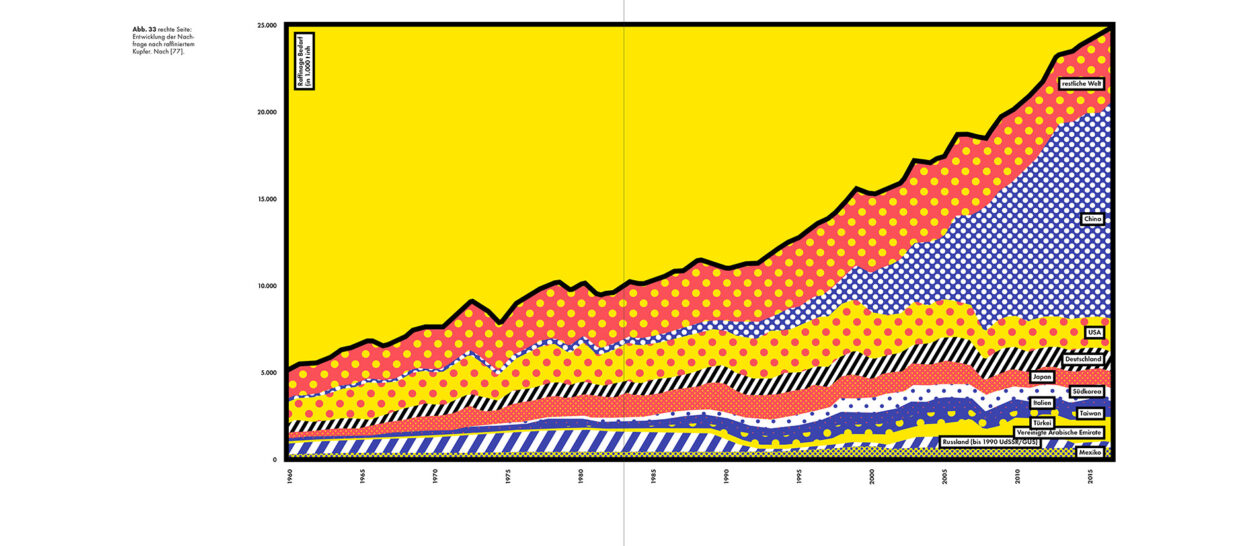
Issue 1: You have to start from what is
With Volume 1 of his trilogy “non nobis”, Werner Sobek presents the first comprehensive contemporary analysis of his industry. A new standard work that forms the basis for building in the future. The book offers a worldwide inventory of current trends and developments that directly affect our built and natural environment – and are massively influenced by the way we build: Resource consumption and availability, building materials, emissions, energy, global warming, climate targets, population trends and much more.
Order volume 1 of the trilogy “non nobis” here.
Layout and infographics: büro uebele visuelle kommunikation
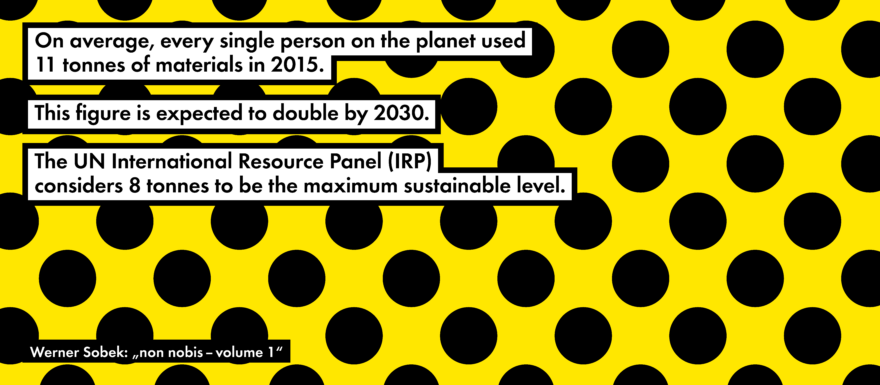
Key message I: Materials
The building industry is largely responsible for the worldwide emission of climate-damaging gases and the overexploitation of nature and resources.
In the first volume of his trilogy “non nobis”, Werner Sobek clearly explains how exactly this share is made up.
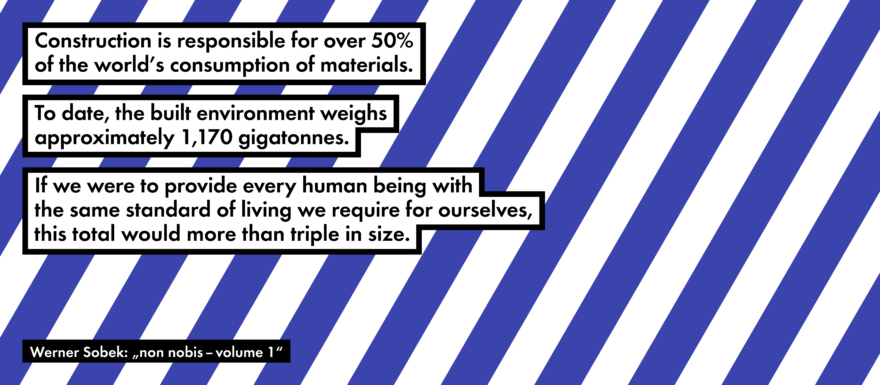
Key message II: Resources
Construction accounts for more than 50 % of the world’s material consumption. In the first volume of his trilogy “non nobis”,
Werner Sobek explains exactly how this material consumption is made up.
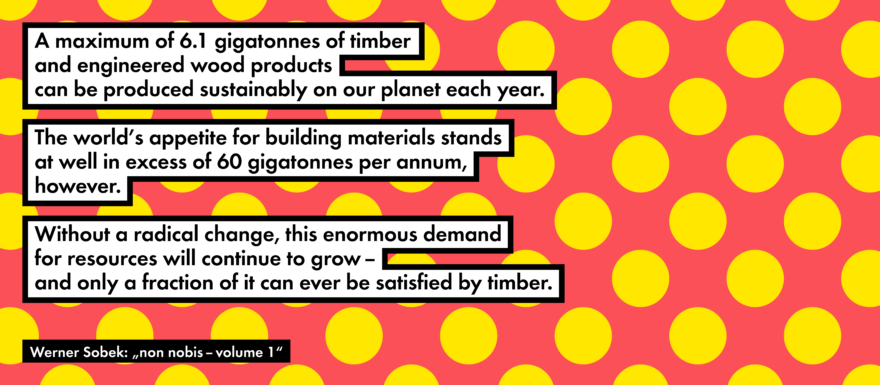
Key message III: Building materials
The construction sector tops the list of material-consuming industries worldwide – and the demand for building materials continues to rise dramatically. Global demand now exceeds 60 Gt per year. These are alarming figures…
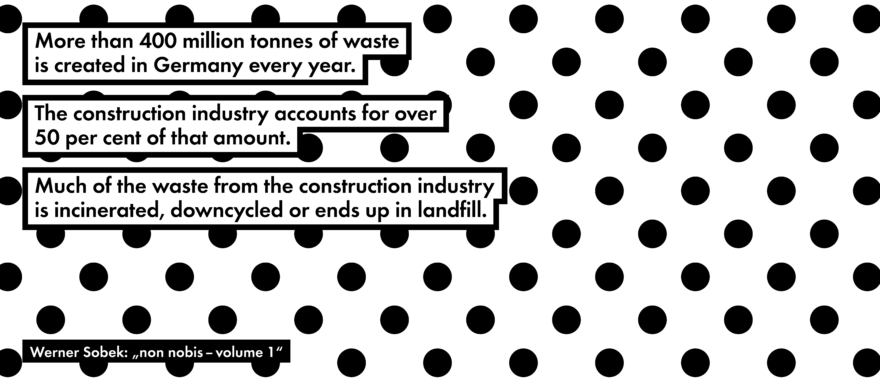
Key message IV: Waste
400 million tons of waste are generated in Germany alone every year. The construction industry accounts for more than 50% of this waste. A large proportion of waste from the construction industry is incinerated or used in downcycling…
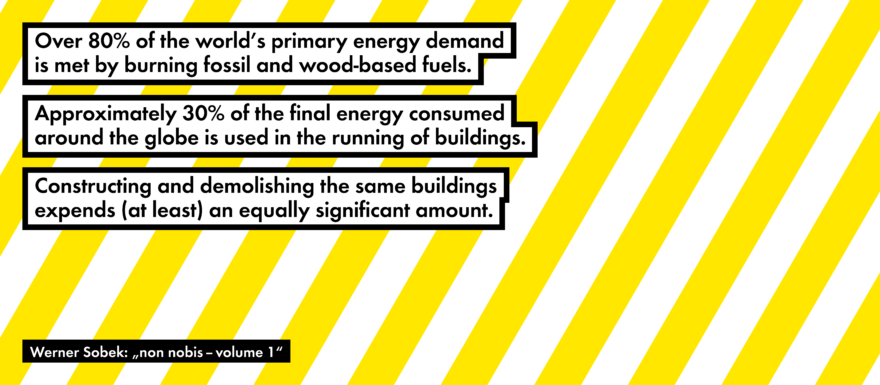
Key message V: Energy consumption
To date, the main share of primary energy demand is derived from fossil sources and wood. The use of buildings accounts for about 30 % of global final energy consumption. The production and demolition of buildings, in turn, cause (at least) an equally large share, which, however, has hardly received any attention so far…
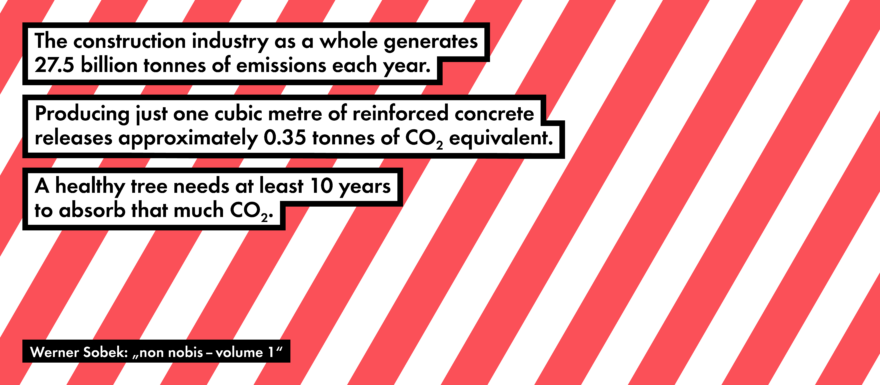
Key message VI: Emissions
It is now undisputed that climate-damaging gases are responsible for climate change. Although the main polluters and possible absorbers are known, CO₂ emissions continue to rise steadily…
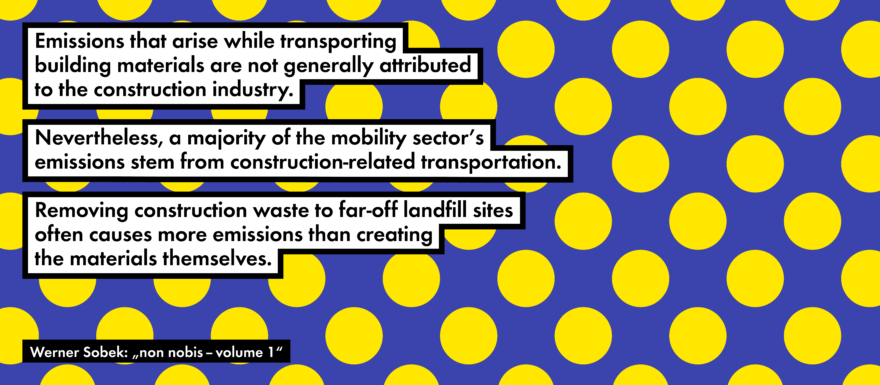
Key message VII: Transport
A large share of energy consumption and emissions in the mobility sector is generated by transport in the construction sector. However, these figures are often attributed to other sectors. This means that the true correlations are obscured…
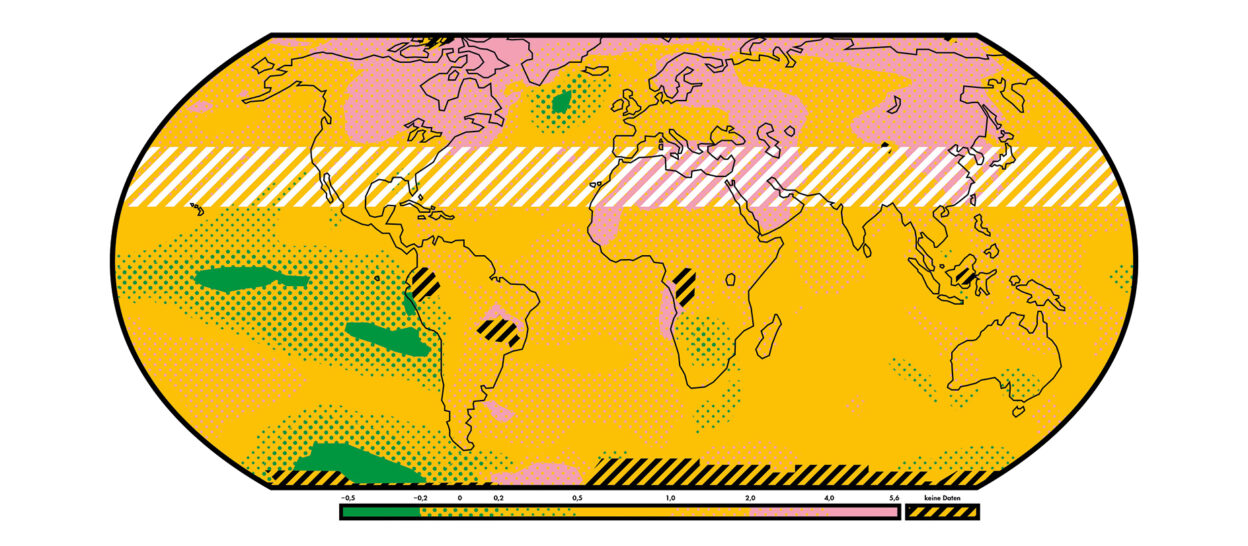
Issue 2: About the boundary conditions of the future
In the second volume of his trilogy “non nobis“, Werner Sobek devotes himself to the corridors of action that remain for us to at least limit global warming and its serious consequences – the boundary conditions of the future.
“We must learn to build emission-free for more people with less material” Werner Sobek demands again in the second volume of his trilogy – Ernst Ulrich von Weizsäcker calls this a “compulsory task for humanity in the coming decades” in his foreword.
Order volume 2 of the trilogy “non nobis” here.
Layout and infographics: büro uebele visuelle kommunikation
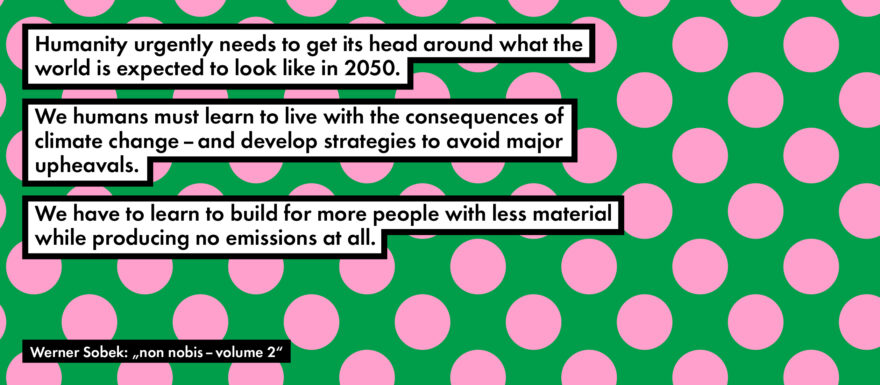
Key message I: The world of tomorrow
What will our world look like in 2050? No one can predict exactly – but Werner Sobek believes it is vital to explore the boundary conditions that will determine our path into this future. He is convinced that the construction industry in particular must develop strategies to counter the rapidly advancing climate change.
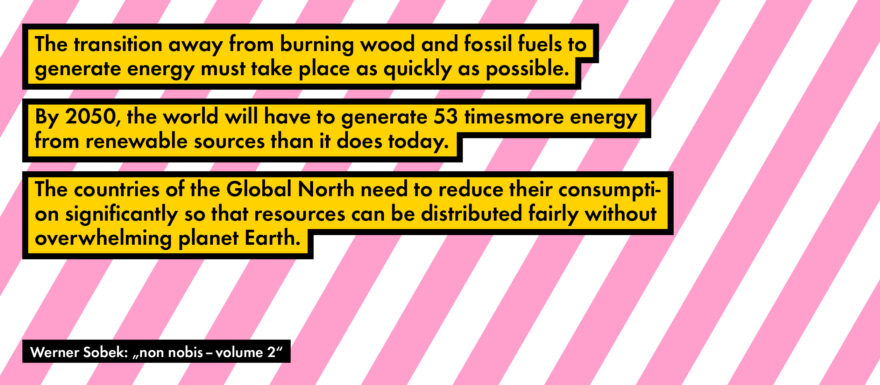
Key message II: Energies
“The countries of the Global North must significantly reduce their energy consumption,” warns Werner Sobek in the recently published second volume of “non nobis“. Renewable energies must finally be massively expanded and used worldwide.
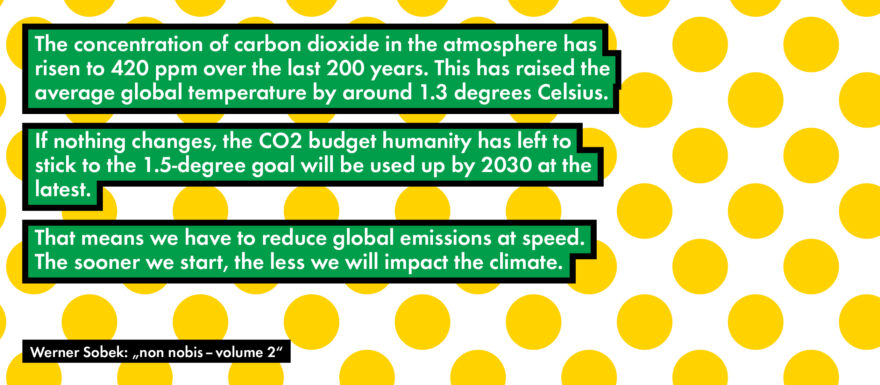
Key message III: Emissions
Climate-damaging emissions “remain in the atmosphere for decades, sometimes centuries”, Werner Sobek points out in the second part of his trilogy “non nobis“. We can only slow down climate change by drastically reducing man-made emissions worldwide immediately.
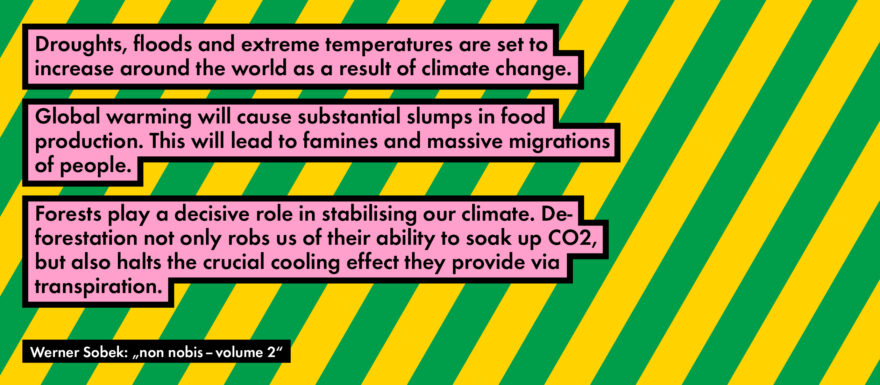
Key message IV: Climate
“Already today,” warns Werner Sobek in the second volume of his trilogy “non nobis“, around 30% of the world’s population live in areas where “potentially deadly heat prevails for at least 20 days a year“. The global destruction of forests is a major contributor to global warming and man-made climate change.
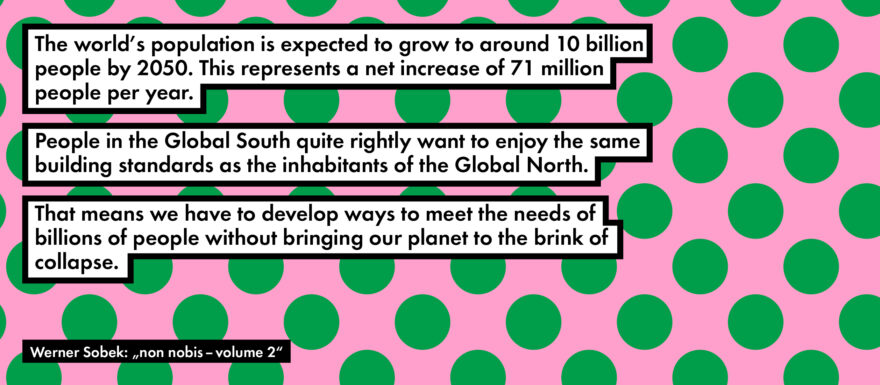
Key message V: The future of humanity
Our world can only continue to exist if we stop climate change and at the same time manage to meet the needs of all people. “The people of the Global South,” explains Werner Sobek, “rightly want the same building standards” that we take for granted.
Conclusion: Building industry bears responsibility!
The emission of climate-damaging gases, the consumption of precious materials from our nature or the toxic waste produced – the building industry is significantly responsible for all these aspects. And must finally act responsibly!












